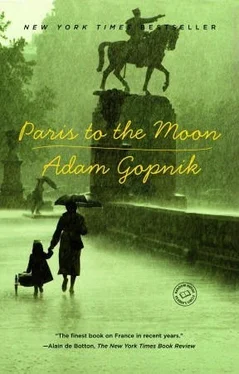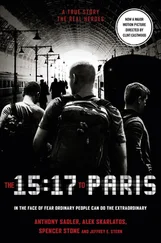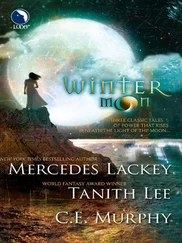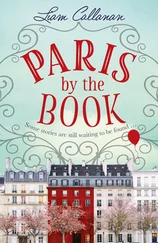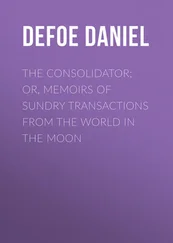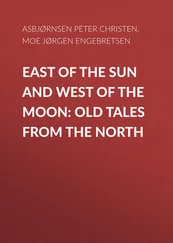The logic (or fantasy) of the wooden cross on the bottoms of the trunks of the French Christmas trees, as the bemused dealer explained it to me, is that it “seals” off the tree’s trunk and keeps the sap inside, keeps it from drying out. The opposed American logic, our logic, of course (or is it our fantasy too?), is that an open cut will keep a dead and derooted tree “fresh” for as long as you need it, for as long as you give it water and the season lasts.
Or is the cut cross, after all, really a kind of covert, symbolic, half-hidden reminder on the part of a once entirely Catholic country of the cross-that-is-to-come, of the knowledge that even Christmas trees can’t be resurrected without a miracle? Americans persuade themselves that a dead tree is still fresh if you keep pouring water on it; here there is a small guilty stirring of Catholic conscience that says, “It’s dead, you know, the way everything will be. You can seal it up, but you can’t keep it going. Only a miracle will bring it back to life.”
Naturally none of the Christmas tree garlands I bought last year works this year. Though Martha packed them away neatly when we took the tree down, they have managed to work themselves into hideous tangles, the way Christmas lights always do. If the continued existence of the Christmas tree light garlands, even though they’re obviously impractical compared with strings, is proof of the strength of cultural difference, their ability to get themselves tangled is just as strong proof of cultural universality. The strands did it in New York, the garlands do it here, and there is no explaining how they do. The permanent cultural differences are language, the rituals of eating, and the habits of education; the permanent cultural universals are love of children and the capacity of Christmas lights left in a box in a closet to get themselves hopelessly tangled in knots.
The American Christmas came to Paris while I was away in New York; Halloween came this year for the first time, right while we were watching, right under our noses. Linus waiting for the Great Pumpkin couldn’t have been more shocked, more pleased than we were to see Halloween rising before us like a specter, an inflate raft. The shops were suddenly filled with pumpkins and rubber masks and witches and ghost costumes and bags of candy. Apparently the American Halloween has been sneaking up bit by bit for a little while, but everyone agrees that this year the whole thing has really happened, and for the most obvious of reasons: It is a way for small shopkeepers to sell stuff before Christmas comes. Le Monde, sensing this brisk commercial motive, published a piece about the coming of Halloween, predictably indignant.
The essentially creepy, necrophile nature of the holiday, invisible to Americans, was harder to hide from the French. Our friends Marie and Edouard, whose two children, Thomas and Alexandra, live across the courtyard, were dubious: The children dress up as the dead and the horrific and then demand sweets at the price of vandalism? The pleasure is located where exactly? Our friend Cassie says that her French mother-in-law, seeing the grandchildren dressed up as skeletons, let out a genuine shriek of distaste.
Of course, it is incumbent on Americans to reassure, gently, that it is not really a holiday of the dead at all, that like all American holidays, it is a ritual of materialism, or, to put it another way, of greed, a rite designed to teach our children that everything, even death, ends with candy. It is just fun. Fun is the magic American word (Our motto “Let’s have fun!” is met by the French motto “Let’s be amused.”) Though Halloween arrived and caused parties and sales, the tradition of trick-or-treating has not really caught on here, and so Martha and several other mothers decided to have a Halloween party in her friend Cassie’s apartment, where the mothers hid behind doors, so that the children could knock and get their candy. It was trick-or-treating made into an indoor sport. The French children in the party, she tells me, just didn’t get it. What was the point, the French children, disconsolate as ghosts and skeletons and witches, seemed to wonder, waiting behind their doors, to be all dressed up, with nowhere to go?
Luke has mounted up onto the horses on the carousel this year, although he needs to be tied on, like a parcel. To my delight, though not really to my surprise, I discovered this year that the carousel has been turning in the same manner, offering the same game, and drawing the same bemused, fascinated attention of foreigners for at least seventy-five years. I found a passage in the travel writing of Joseph Roth, the German novelist, who visited the Luxembourg Gardens in 1925 and wrote about the “ maneges de chevaux de bois pour enfants.” He describes the rings and sticks, exactly as they are today: “The owner of the merry-go-round holds in his hand, at the end of a stick, little rings lightly hung and easy to detach. All the children on the horses and in the tiny cars are armed with wands. So that when they pass before the rings, they try to unhook them, which is to say slip them onto their wand. Whoever gets the most gets a prize. They learn quick action, the value of the instant, accelerated reflexes, and the trick of adjusting ones eye.” “The value of the instant…” Doubtless Cartier-Bresson and the rest of the decisive moment” photographers rode on such horses, caught their rings, learned there’s only one right moment in which to do it.
Roth admired the game endlessly, because it seemed so un-German, such a free and charming way to educate, without the military brutality of Teutonic schools. The funny thing is that there are now no more prizes—the same game, same carousel, but no more prizes. Nothing left to teach. You get the ring for the pleasure of having taken it. I wonder which child when won the last prize.
The differences are tiny and real. Cultures don’t really encode things. They include things, and leave things out. There is, for instance, the exasperation of lunch. Lunch, as it exists in New York, doesn’t exist here. Either lunch is a three-course meal—i.e., dinner, complete with two bottles of wine—or else it is to be had only at a brasserie, where the same menu—croque monsieur, omelet, salad Nicoise—is presented almost without any variation at all, as though the menu had been decreed by the state. A tuna sandwich, a bran muffin, a bowl of black bean soup—black bean soup! Yankee bean! Chicken vegetable! It is soup, beautiful soup, that I miss more than anything, not French soup, all pureed and homogenized, but American soup, with bits and things, beans and corn and even letters, in it. This can shake you up, this business of things almost but not quite being the same. A pharmacy is not quite a drugstore; a brasserie is not quite a coffee shop; a lunch is not quite a lunch. So on Sundays I have developed the habit of making soup for the week, from the good things we buy in the marche biologique on the boulevard Raspail. Soup and custard on Sunday nights, our salute to the land of the free.
My favorite bit of evidence of the French habit of pervasive, permanent abstraction lies in the difficulties of telling people about fact checking. (I use the English word usually; there doesn’t seem to be a simple French equivalent.) “Thank you so much for your help,” I will say after interviewing a man of letters or politician. “I’m going to write this up, and you’ll probably be hearing from what we call une fact checker in a couple of weeks.” (I make it feminine since the fact checker usually is.)
“What do you mean, une fact checker ?”
“Oh, it’s someone to make sure that I’ve got all the facts right, reported them correctly”
Annoyed: “No, no, I’ve told you everything I know.”
Читать дальше
